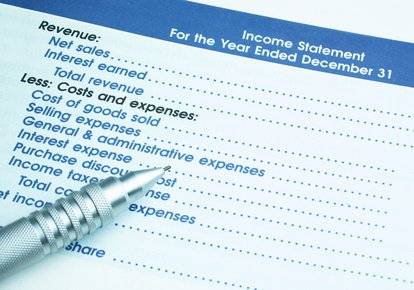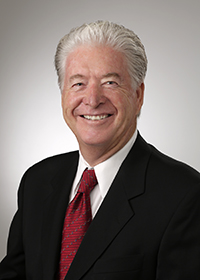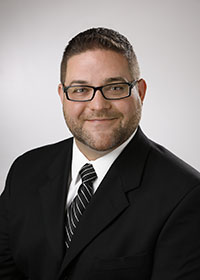
I think about trust every day. How to earn it. How to keep it.
It’s the lifeblood of my business. So, I decided to do a little research. On some level, I already knew what I’m about to share, but it still took my breath away to see it in black and white.
Two-thirds of clients do not trust advisors to act in their best interest, cites The American Association of Individual Investors (AAII) in a June 2016 poll or some 2,000 respondents.
“Sixty-five percent said they ‘mistrust a lot’ or ‘mistrust a little’ when it comes to whether the financial services industry and specifically brokers and financial advisors will do what is in the best interest of clients,” said the AAII. [bolding is my emphasis]
Only 15 percent said they “trust a little,” and only two percent of respondents said they trust the industry a lot. “Perhaps not surprisingly, the vast majority–nearly 83%–feel that their interests are secondary to corporate profits and advisor/broker compensation,” the AAII wrote.
 Guava Not Grapes
Guava Not GrapesPublic confusion persists over the difference between commission-based brokers (think grapes) and advisors who follow a fiduciary standard of care (think guava). What you need and want is the special flavor and uniqueness of a guava, not a common bunch of grapes.
Of course, many of you are sophisticated clients and know this. I do believe that as your fiduciary, we hold a responsibility to regularly reaffirm our trustworthiness, especially in an industry fraught with bad actors.
When the average consumer hears the words “finance” or “insurance,” they tune out, annoyed by moral failings and outright greed of Wall Street, hedge fund managers, big banks, mortgage lenders, and the Madoffs of the world.
Money is an emotional issue for people, regardless of their level of affluence. Bring it up, and the red blush of vulnerability spreads across their face.
Elite advisors, like ourselves, share a responsibility to turnaround the trust deficit. And I believe strongly that consumers of financial advisory services owe it to themselves to hold their advisors’ feet to the fire. Because growing and protecting assets depends on growing and protecting trust.
I can count on one hand the number of “trusted” advisors I know worthy of the name. But then, I am a tough taskmaster on most subjects.
My drive to cultivate trust drove my effort to earn key certifications: Accredited Investment Fiduciary® (AIF) and Certified Plan Fiduciary Advisor (CPFA), and to establish my firm as a Registered Investment Advisor. All these marks signify specialized knowledge of the fiduciary duty and a commitment to promote a culture of fiduciary responsibility and professionalism. But there’s no guarantee even certified advisors will do the right thing. Knowing humanity, I suspect the fiduciary care standard suffers its share of bruising, too.
It is fair to say; trusted advisors are not product salespeople. Even so, your “financial advisor” may not be operating with your best interests at heart. And some 200,000 do business in the United States.

That was the finding from a recent report from the Consumer Federation of America, a Washington, D.C.-based consumer advocacy group. The organization looked at 25 major brokerage firms and insurance companies.
The report said while brokerage firms and insurance companies call their professionals "financial advisors," these individuals often are sales representatives who pitch mutual funds, annuities and insurance products.
I am going to offer you some key questions to ask potential advisors in a moment to help you separate the guavas from the grapes. Put me to the test, too.
To determine what creates the trust in “trusted” advisor, we need to wade through some pretty deep waters. Opinions on trust are as plentiful as fish in the sea.
The experience of trust is highly subjective; its origin rests in the mind of the client or prospect. It can be quantified, but that’s secondary.
Neuroscience confirms that people buy on emotion and justify with logic. While this finding has a long history and its detractors, I submit the creation of trust parallels the emotion-logic sequence.
Allow me to offer my seven-point list of what (I believe) creates trust, based on thirty years in the business:
 You appreciate your advisor’s ability to guide you through complexity, simplifying difficult topics and concepts along the way. You recognize how your advisor helps you uncover the value in his advice and recommendations.
You appreciate your advisor’s ability to guide you through complexity, simplifying difficult topics and concepts along the way. You recognize how your advisor helps you uncover the value in his advice and recommendations.When all is said and done, everything comes down to truth. Will you advisor tell you the objective truth, based on facts, and will he share his truth? Ask these questions of current or prospective advisors:
What are your advisor's core values?
Can he or she recite their values to you with conviction? Or do they value the transaction over the relationship?
How is your advisor compensated?
Get very clear on whether your advisor is fee-based or commission-based. Understand how you pay the fee─ annually, deducted from your assets, or must you write a check each time you meet or speak.
How extensive is your advisor’s expertise, experience, training, and certifications?
Transparency engenders trust. And you can easily check on your advisor’s credentials, claims of expertise, the veracity of advice. Contact FINRA, other clients, do online searches for information.
Can you define the nature of your client service with “above and beyond” examples?
Self-explanatory. However, you want to look for a red-carpet brand or white-glove service that pushes way beyond a once-a-year phone call.
If I check FINRA or ERISA, will I find any instances of non-compliance?
Of course, this inquiry is critical. Nothing short of total compliance can work in our business.
What is your commitment to client education?
Do you understand your plan or investments? If not, it is a red flag. Determine to your satisfaction that your advisor will take the time to explain all aspects of your financial program patiently. You must stay informed and well educated about your money.
Will you sign a “truth commitment” or fiduciary oath for me?
For more information on this fascinating concept, check out Wealth Manager, Paul Merriman’s article on MarketWatch.
The good news? Roush Investment Group is already a 3(21) investment fiduciary.
But that does not mean we sit on our status. Your financial well-being comes first.
You will hear more from us on matters of trust.
In a world of so-called “fake news,” one thing we know with certainty: You can’t fake trust.

Out of 28 million businesses1 in America, roughly 10 million owners plan to sell or close their businesses over the next 10-15 years 2, the majority because they need to fund their retirement.
And nearly 80 percent of these business owners plan to fund 60 to 100 percent of their retirement by selling their business.
Of the remaining, only half put a strategy in place; the other half are working on a plan.
We understand you’re massively tasked with running your business. And that you get little time off for the luxury of advanced planning. But without an exit plan, you risk losing or devaluing your largest asset.
And it’s not just only about you.
Selling closely held businesses affects tens of millions of people. Small business employs more than 80 percent of all U.S. workers. Those folks may be family members, long-time employees or friends.
Roush Investment Group has always been a crusader for small, mid-size closely held businesses. That’s why we’re here to help you prepare your business exit plan.
 This post, the last in a four-part series, looks at how to prepare to sell your business, and what to do even if you don’t want to sell. First, a word about family-owned businesses.
This post, the last in a four-part series, looks at how to prepare to sell your business, and what to do even if you don’t want to sell. First, a word about family-owned businesses.
The majority of family business owners believe their families will control their business in five years, but succession statistics tell us otherwise.
According to The Family Firm Institute 4, only about 30 percent of family-owned businesses survive into the second generation, 12 percent are still viable into the third generation, and only about 3 percent of all family businesses operate into the fourth generation or beyond.
While this is a sad reality, there’s a solution to stem the loss. Business failures happen because of the absence of family business succession planning, supported by an exit strategy plan.
 In a recent article in Forbes 5, contributing writer Brent Beshore offers this wake-up call:
In a recent article in Forbes 5, contributing writer Brent Beshore offers this wake-up call:
“We are in the beginning of a transition within the American economy where more than half of all businesses with employees will need to sell, restructure, or close their doors. The numbers are finite and inescapable. Mortality is a real thing. Liquidity issues and estate taxes don’t take care of themselves. Without a plan, the likely result is a legacy of chaos and confusion.
Whether begrudgingly or willingly, every Baby Boomer owner must confront this question: What will my company look like without me involved, and what process needs to take place to ensure my family’s financial health and the company’s prosperous future?”
Exit planning creates and executes on a strategy to enable owners to leave their business interests in their own time and on their terms.
Exit planning is an established process with a written roadmap, involving a team of professionals, led by an exit planning advisor who guides the path to results.
Most entrepreneurs go into business intending to build, sell, and move on. Experts say you should begin planning for your exit the day you open.
You invest decades building and running their businesses. One day, you know you’re done. You want something different out of life, less stressful, perhaps, more meaningful. You simply want to stop grinding it out every day.
Even if selling your business seems far in the distance, at some point, every business owner steps away from command due to:

Your documented exit plan will help you get the maximum value for your business, whatever your goal. Among the personal exit goals we encounter, owners want to:
Exit planning may take as little as six months to as many as five years to fully plan and implement an exit strategy, with the average time of two years.
Make sure the business is ready, too. You need the right people and systems in place for a smooth transition and to meet your ideal selling price. Of course, the business needs to showcase solid financials to attract the right buyer.
Prospective buyers will want to know how involved is the owner? If he or she is integral to the success of the business, the buyer will mostly be buying a job. We often see the purchase price based on an earn-out formula requiring the owner to stay on for a few years. If the business can run without you, it will be more valuable to a buyer.
As an owner, you need a strong understanding of the market value of your business. Once you do, you can take strategic measures to increase the market value, where needed.

Step 1─Exit Objectives
Have you determined your primary planning objectives in leaving the business, such as:
Step 2─Valuation and Cash Flow
It’s important to understand how businesses in your industry value themselves and determine price.
Step 3─Making the Business More Valuable
Increase value by knowing how to find hidden value and account for it in your in planning.
Step 4─Sale or Transfer to Third Parties

This list is certainly not exhaustive; however, it will help you get started.
If you’re exit planning, consider ways to consistently increase sales and revenue, with special attention to recurring revenue sources to generate gross income for a new owner. Build recurring revenue streams and shore up pending customer or vendor contracts to give buyers the comfort of a consistent revenue flow.
***
It’s time to decide. Once you’re ready to do a business exit plan, contact us.
We’ll share a list of documents you need; then we’ll sit down together, review your goals, and set up a course of action. We’ll do the worry and work, so you don’t have to.
If we can be of service, please contact me below.

Roush Investment Group
O: 559.579.1490 F: (559) 490-2015 C: (559) 285-3318

Too few plan sponsors understand the service hierarchy surrounding 401(k) plans, let alone the responsibilities of each servicer.
Do you know who is responsible for what in your plan? Chances are, you don’t.
In the event of a compliance or liability issue, this lack of knowledge can cost you dearly.
Several years ago, the Department of Labor hired 1,100 more auditors to audit every qualified retirement plan in the United States by 2020.
In FY 2016, the Employee Benefits Security Administration, responsible for ensuring plan integrity in the U.S. closed 2,002 civil investigations and 67.7 percent resulted in fines on plan sponsors who, one could say, were not paying attention to their plans.
The average fine was $259,000. Could your P&L handle that?
We want to raise your awareness of who’s who in your 401(k) plan, and suggest an innovative alternative to you to sleep better at night. We worry about you sponsoring a plan with a false sense of security.
By default, you, the plan sponsor/employer is 100 percent responsible for your plan, especially its investments.
You hold the ultimate decision-making authority for those investments, their selection, monitoring, replacement or removal─with the freedom to accept or reject any recommendations.
 If you are uncomfortable making your plan’s investment decisions, you have several choices. You can work with a non-fiduciary registered representative (a broker). You can work with a 3(21) fiduciary, like Roush Investment Group, also an Accredited Investment Fidicuary. Or you can work with a 3(38) investment manager.
If you are uncomfortable making your plan’s investment decisions, you have several choices. You can work with a non-fiduciary registered representative (a broker). You can work with a 3(21) fiduciary, like Roush Investment Group, also an Accredited Investment Fidicuary. Or you can work with a 3(38) investment manager.
Let’s quickly define our terms and spell out the main pros or cons of each role.
In general, fiduciaries hold the responsibility and duty to:
Roush Investment Group is a different breed of 3(21) investment fiduciary. However, before I explain our difference, let me first explain the term 3(21) which defines our responsibilities under The Employee Retirement Income Security Act of 1974 (ERISA) in § 3(21). A quick review in layman’s terms.
As your 3(21) investment fiduciary, a fee-paid professional, we advise and provide investment recommendations to our clients, the plan sponsors. A 3(21) fiduciary advisor gives direct guidance and recommendations to each participant on his or her investment selections.
The plan sponsor retains the consequent decision-making authority for the investments, and may accept or reject the recommendations. We share fiduciary responsibility with you, and we assist in writing the investment policy statement (IPS), the governing document which is the foundation of the process.
As plan sponsor, you also must decide who executes the investment decisions for the plan or select your 3(38) investment manager, the primary point of today’s post.
ERISA Section 3(38) defines the investment manager as a special type of fiduciary, specifically appointed with full discretionary authority and control to decide on actual investments, subject to plan document terms and the IPS. The manager may select, monitor, remove and replace the investment options offered under the plan.
The 3(38) must be a registered investment adviser, bank or insurance company, and must acknowledge its fiduciary status in writing. Service agreements must carefully drafted to provide for the appointment.
The powerful draw of a 3(38) fiduciary, if properly appointed─plan sponsors are relieved of fiduciary responsibility for the investment decisions made by the investment manager. The 3(38) fiduciary assumes even greater liability than a 3(21).
While still responsible to monitor the investment manager’s proper performance of services, you do not need to worry about or second-guess investments. Now you have an extra layer of protection.
Every plan sponsor needs a 3(38)-investment manager to mitigate risk and liability.
Your brokerage firm, investment advisor, insurance agent, or financial planner cannot reduce your liability because they offer no process for continuous monitoring of the responsible parties in the hierarchy. And yet, you pay for services. In fact, benchmarking is all they can offer; however, then you are compelled to take that knowledge and execute or not.
What’s more, they only bind themselves by the lesser “suitability” standard of care, not the “accountability” of fiduciaries bound to do only what is in the sole interest of the client.
What if you could find a golden referral to a 3(38) investment manager?
What if you could access a failsafe process to bring down your plan liability?
What if you could tuck the responsibility hierarchy under one umbrella without monitoring everyone?
The good news? Every Roush client will soon benefit from the maximum protection that the law allows as we transition to the 401(k) plan of the future─our breakthrough DCPro process.
Earlier I referred to Roush Investment Group as a different breed of 3(21) fiduciary. And here’s why.
We are pleased to introduce an innovative process, called DCPro, to surround your plan with the ultimate shield of protection. Roush Investment Group identified and appointed industry-leading fiduciary experts to collaborate and manage your plan in your best interest.
DCPro delivers the expertise of a 3(16) plan administrator, a 3(21) fiduciary advisor, and a 3(38) investment manager in one powerful collaboration, each driven to limit your liability exposure.
As your 3(21) fiduciary, Roush Investment Group helps you monitor all servicers to your plan through the latest software and technology platforms. Think of us as your sentinel on watch, your plan’s own security system.
Now, you do not need to be an expert fiduciary or search for the right 3(38) investment manager. Or worry about the compliance readiness of your plan.

We’ve removed the burden of 401(k) operations from your back office to ours. And provided a named fiduciary to relieve you of fiduciary responsibility to the maximum extent permissible by law.
You are virtually free of compliance threats, No more time-consuming responsibilities, And at a market competitive cost.
Instead of struggling to piece together a team of independent fiduciaries yourself, who may or may not work well together, take advantage of the seamless structure of DCPro.
We’ve already done all the work for you.
Even if you’re not ready for our solution, we strongly urge you to upgrade the fiduciary protection on your plan by engaging a proven 3(38) investment manager for all the reasons we’ve discussed in this post.
Don’t be caught off-guard by regulators. Make the wise choice to protect yourself now.
If we can be of service, please contact me below.

Roush Investment Group
O: 559.579.1490 F: (559) 490-2015 C: 559.907.6647

Do you sponsor a 401(k) plan for your employees? Many of our clients do. But less than half of American companies with under 100 employees do 1. If you’re one of those, your cost of doing business in 2017 is set to rise.
A talent shortage persists. In a report by Deloitte, 79 percent of manufacturing companies face difficulty filling positions due to a skills gap. Roughly the same percentage was reported in consumer products (78%), technology (77%), healthcare and business services (both at 74%). All these sectors reported ‘major talent shortages.’
To add to the challenge, millennials (born between 1982 and 2004) represent the majority of the workforce today. And they’re a delightfully contrarian lot.
Some 75 million strong, millennials expect more from work than previous generations. They’re extremely wired, accessing terabytes of information to make more informed decisions. They’re attracted to brands they love and employers who care. And they want great benefits.
No, they expect great benefits.
If you do not offer a fully competitive 401(k) plan to your employees, you will be hamstrung to attract and retain the top talent you need to grow your business. When a prospective hire considers whether to work for you or someone else, the package of benefits you offer will make the deciding difference.
In a nation suffering from retirement insecurity, workers naturally look to their employers for assistance. A 401(k) plan proves you value your talent and what it brings to the company. What’s more, retirement benefits rank second behind health insurance in importance to your people. Besides, it costs far less to offer benefits designed to keep good people than to find, hire and train new ones.
“If employers would really calculate in a systematic way how much turnover costs to them, they would pay more attention to clever ways of compensating workers, like adding a 401(k) account to their benefits,” says Teresa Ghilarducci, nationally recognized expert in retirement security. “It doesn’t really cost that much, because the 401(k) contributions are flexible, employers can stop them whenever they want, most of the contribution can come from their employees, and employees really like them.”

A 401(k) plan offers tax advantages for both the employer and employee. Many small businesses can qualify for a $500 tax credit to offset the cost of operating a 401(k) plan for each of the first three years. Plus, when the employer matches employee contributions, those sums are also tax deductible. Brightscope tells us that more than three-quarters of sponsors make matching contributions to their plans. Little wonder, then, by the end of Q1 2016, Americans held $4.8 trillion in 401(k) plans.
But here’s the sad news.
Remember that roughly half of Americans do not work for an employer that sponsors a retirement savings plan. And consider this: “When you add in people who did not participate in a plan offered to them or who were not working, a staggering 68% of working-age people (25-64) did not participate in an employer-sponsored plan,” reports Forbes.
Progressive employers give employees a leg up on retirement security with a 401(k) plan and offer a choice between a traditional 401(k) plan and a Roth 401(k) plan. Fifty percent of employer defined contribution plans offer a Roth 401(k), according to Aon Hewitt.
Here’s the great news: Your employees do not have to choose between one or the other. There’s room for both. By understanding the differences between a traditional and Roth 401(k), you can help your employees save on taxes now and later. Let’s unpack these differences.

If you choose a traditional 401(k), you make contributions on a pre-tax basis. You pay taxes when you withdraw these funds at retirement. Because your contributions are not counted as income, your tax bill could be lower today. And, you enable your retirement assets to grow on a tax-deferred basis. Because you are taxed on future withdrawals, in effect, a percentage of your 401(k) balance belongs to the IRS.
The after-tax Roth 401(k) plan does not entitle you to an upfront tax break, like the traditional 401(k), because you pay taxes on your account contributions at the time they occur ("today"). As important, withdrawals are not required and some plans could stipulate in plan documents that withdrawals occur at a defined “retirement age.” However, all accumulated growth and all qualified future withdrawals are tax-free. With your taxes already paid upfront, no tax is charged at retirement withdrawal. The plan your employees select will depend on their individual situations and retirement goals.
At its core, the decision to go Roth or traditional is somewhat of a calculated risk. You are betting on where tax rates will land in the future. Who can know? You can review historical tax rates, take the current political situation into account, then make a guesstimate based on these factors:
If taxes are your employees’ prime concern, they may prefer a traditional 401(k) and defer taxes (on their higher income now) until retirement when lower income and a lower tax bracket is more likely. Let’s say you’re at the beginning of your career with taxes deducted from your paycheck regularly; it makes sense to use this after-tax income to contribute to a Roth 401(k). The contributions grow tax-free, and you will not feel the pain of taxes at retirement.
What if your peak earning years come later in your career, and you find yourself in a higher tax bracket nearing retirement, the traditional 401(k) plan becomes a smart choice.
Alternatively, what if you befall a medical emergency or illness, you can tap a good-size portion of your Roth 401(k) to pay for the unexpected without the tax burden of a traditional 401(k).
We know you care whether the investment lineup in your plan is well diversified. Why not help your employees diversify their tax exposure, as well? By offering both a traditional and a Roth 401(k) plan, you produce a trifecta of advantages. Participants in the plan can lower a certain amount of current taxable income, contribute to a diversified retirement plan, and gain some insulation against future tax hikes.
As long-time fiduciaries, we are duty-bound, and honor-bound, to do the right thing by our clients. That’s why we recommend offering both plans to your employees.
No better feeling exists than the experience of doing the right thing.
If we can be of service, please contact me below. My door is always open.
To Your Financial Freedom,

Roush Investment Group
O: 559.579.1490 F: (559) 490-2015 C: (559) 285-3318
© 2025 Roush Investment Group. All Rights Reserved.
Website Developed by WebCity Press.